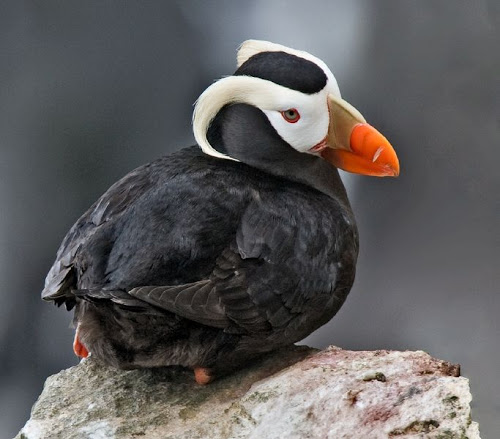

Please always be respectful towards the birds. Touching a puffin is actually very harmful to them as their feathers have special properties that deflect water. But this doesn’t mean that they want to be touched or that they enjoy our company. Puffins do not often show any fear towards humans and approaching them very closely seems to be easy. Ultimately, we are responsible for protecting them. It is understandable that we, curious as humans are, would like to explore nature and connect with it on a personal level, but we need to keep in mind that we can do serious harm unwittingly. Their appearance is the result of millions of years evolution and they were not created to make people giddy and happy.
PET PUFFIN FREE
These cute, silly-looking little birds are free and wild animals. However, the average lifespan of a puffin is 20 to 25 years. The oldest recorded puffin was ringed in the Westman Islands and died at the age of 38.
In bird terms, puffins live long lives. 
This is the reason why they can dive down as far as they do. The reason why they need to flap their wings so fast is that their bones are not hollow so they are heavier than other birds.

They can dive to depths of about 60 meters and fly at a speed of 88 km/h (24m/sec) by flapping their wings 400 times per minute!
Atlantic puffins have incredible skills. The chick grows rapidly, after about six weeks it is fully developed and capable of caring for itself. 
It takes 36-45 days for the baby “puffling” to hatch.
The male and female share parental responsibilities, they take it in turns to incubate the egg. Each year they return to the same burrow. To make their nests, known as burrows, they dig out a burrow in the turf or soil where they lay their single egg. They usually mate for life and a couple can stay together for over 20 years! In late spring, thousands of puffins form large colonies on coastal clifftops, coming together for the breeding season. Each bird has more than a square kilometer to itself, so it is very unlikely that anyone will spot a puffin on the open sea in winter. While at sea, the birds spread out widely across the North Atlantic Ocean. Each female produces a single puffling every year. They spend most of their lives resting on waves, coming ashore only to breed and raise their young, known as pufflings. This is because puffins spend the winter – more precisely, the larger part of the year, some eight months – out at sea. Their winter dress is, though, seldom seen by humans! The birds develop their brighter colors once again during the spring. Their white feathers become dark gray and their beaks also change, becoming narrower, with a tip that is bright. At the end of the breeding season, some of the special characteristics of their plumage are lost when they molt. They change their color during the year. The Icelandic nickname of the puffins is “prófastur” which means preacher. Thanks to their funny appearance, puffins have been nicknamed ‘sea parrots’ and ‘clowns of the sea’! Their waddling walks make them look a little comical.








 0 kommentar(er)
0 kommentar(er)
